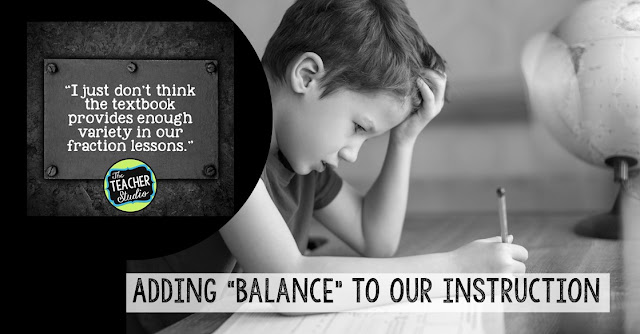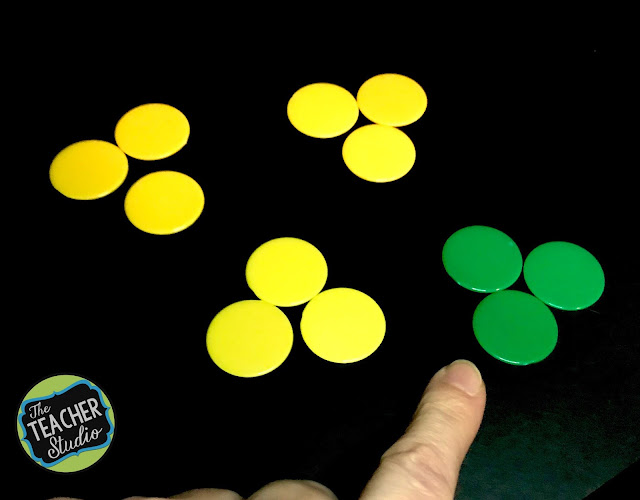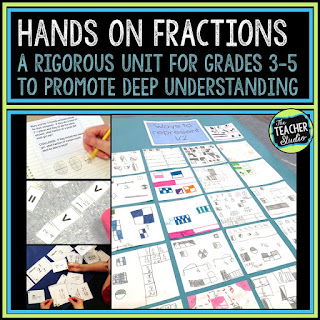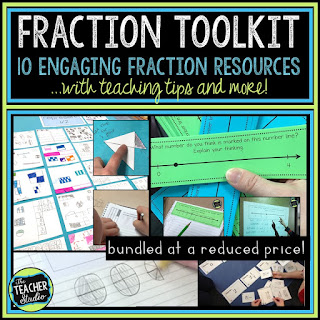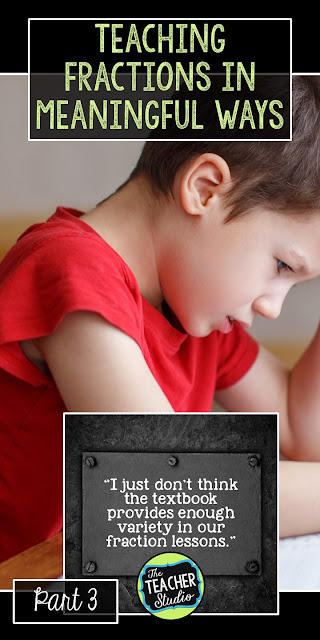Welcome back! If you have been following this series of blog posts all about fractions and improving our fraction instruction and learning, I welcome you to day 3! If you are new to the series, feel free to snoop around at POST 1 and POST 2 when you have time for more foundation information about teaching fractions.
Today I want to focus on something I briefly touched upon in that first post–the fact that fractions can be so challenging because they appear in so many different formats and contexts. Whether you teach in a Common Core state or any other state/country with rigorous standards, we need to strive for a balanced approach to teaching fractions.
When we learn whole numbers, three means three. You can have 3 dogs. Or you can eat 3 chocolates. You can read 3 books. We can count 3 on our fingers. We can pound a drum three times. This makes sense. We can see it and hear it.
 When we talk about fractional amounts, the game changes a little bit, especially for students who may struggle with math concepts. As I mentioned in the first post, consider the concept of “1/2”. I love to start a math class by sitting back and patting my stomach and telling my students that I ate half a pizza for dinner last night. Inevitably, they laugh and make comments about how much I love pizza, and so on. I play it up a little bit and hope (usually it happens!) that someone finally says…
When we talk about fractional amounts, the game changes a little bit, especially for students who may struggle with math concepts. As I mentioned in the first post, consider the concept of “1/2”. I love to start a math class by sitting back and patting my stomach and telling my students that I ate half a pizza for dinner last night. Inevitably, they laugh and make comments about how much I love pizza, and so on. I play it up a little bit and hope (usually it happens!) that someone finally says…
“Wait…how big WAS that pizza?”
And then we begin.
Fractions of Wholes
Even something as simple as moving the shaded area is important…this is ALSO 1/4. What about the unshaded area? We need to ask questions about that too. For example, if I always ask, “What fraction of this cake is frosted green?”, we train our students to automatically label the shaded area. What if the question was, “How many more fourths need to be shaded to make 3/4 of the cake green?”…haven’t we gotten our students thinking more deeply?
Or what about this. “Here is 1/4 of a cake. What would the entire cake look like?”
Here is what we might expect to see (with the original fourth shaded)…
But what about these? Wouldn’t these “atypical” examples work as well?
Fractions of Sets
Knowing that 1/4 of 12 means that there are 12 objects (or even more abstract concept like minutes or correct answers!) and that we need to count ONE out of FOUR equal groups is much more manageable if they have first used 12 counters, made the fourths, and then physically SEE the groups. We can then even count the groups…1/4 of the twelve would be 3. 2/4 of the twelve would be 6…and so on. So often we teach algorithms that aren’t rooted in understanding; tell students to divide 12 by 4 and multiply by one is far more meaningful when they have built it and seen it for themselves!
Providing these constructivist experiences builds so much more understanding than merely teaching students the algorithm. Does the algorithm work? You bet–but it will make so much more sense after they have seen WHY it works. Eventually, we can tie those counters to more abstract things…1/4 of 12 counters could REPRESENT 1/4 of 12 math problems on a test.
I love the Skittles activity I do with students that really gets them thinking about how fractions can be parts of sets. It’s one of the activities in my fraction unit if you are interested in checking that out.
Fractions with Units of Measure
Students Need to “DO” Fractions!
So…my final thought for today is that we need to have students DOING fractions…they need to be looking at rulers and folding paper and making connections to the real world. If we invest in that type of work, the computation will follow.I hope I’ve given you a little to think about as you do your fraction planning. We so often rely on what our math series provide us–but sometimes we need to think past what is given to us and make our students’ math experience more diverse and rich.
Interested in my fraction unit?
How about a bundle of 10 quality fraction resources at a discounted price? Here you go!

